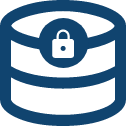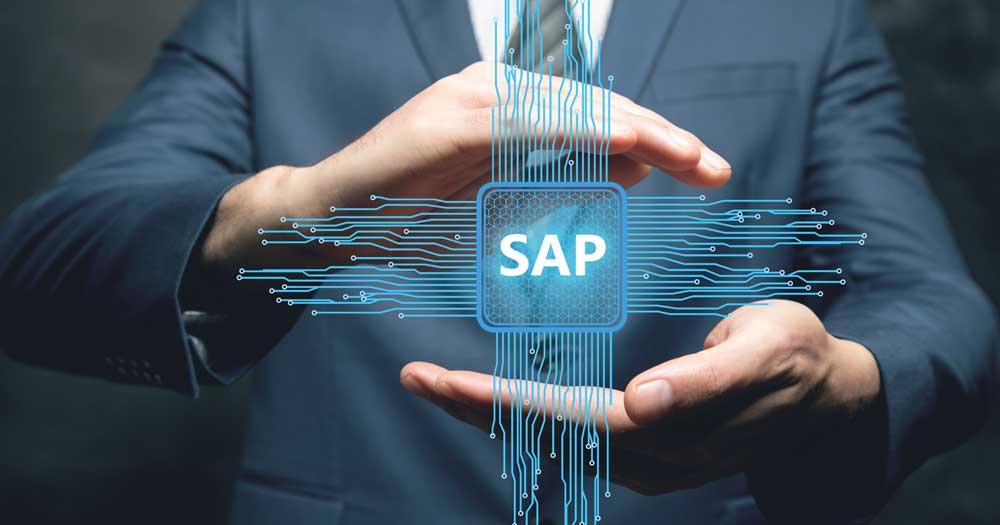This customer success story was originally published on Microsoft’s customer stories portal.
Genpact employees don’t just enjoy informal collaboration with their globally dispersed colleagues—they depend on it as the foundation for great ideas and solutions to complex problems. That fact became painfully apparent when governments issued stay-at-home orders that shuttered businesses and organizations across the Earth in response to COVID, forcing a new work-from-home norm for millions of employees. While formal collaboration continued thanks to multi-mode communications applications like Microsoft Teams, it was soon apparent that chance meetings at the office were far more valuable than anyone had realized. But Genpact seized the day, engaging its Experience Transformation arm, Rightpoint, and Microsoft Partner Network member, Embee Software, to create a virtual watercooler based on workplace analytics from Microsoft Viva Insights. It’s the workday pause that boosts morale with the enjoyment of a friendly, unstructured encounter—and refreshes creativity.
“We combined our Teams expertise with a rich ecosystem of Microsoft solutions to create the Water-cooler conversation app for Genpact. That application is more than a solution to a temporary remote work situation—it’s a tool that offers a new way of working.”
—Gianni Giacomelli: Chief Innovation Officer
Genpact
Innovating unceasingly at Genpact
Genpact is a reimaginer, serving up digital innovations that optimize processes for its global Fortune 500 customers. In the words of the company’s LinkedIn description: “We think with design, dream in digital, and solve problems with data and analytics.” And while its customers rely on innovative Genpact technology, the creative inspiration that drives that technology originates from Genpact people.
Based in New York City, the company was founded in 1997 with 20 employees—the embryo of the multinational company Genpact is today. The company deployed its highly secure Work from Anywhere remote work model early in the COVID-19 shutdown to more than 100,000 employees in mere weeks. Genpact based its Work from Anywhere model on Microsoft 365 and Teams, diving deeply into what Genpact recognizes as the real strength behind its innovations: its people.
Diving into Teams
Genpact Chief Innovation Officer Gianni Giacomelli’s purview includes helping his colleagues develop the technical and domain skills they need to innovate at pace. For him, collaboration is the raw ingredient for Genpact’s successes. “My job is to make Genpact a better collective intelligence,” he says. “We don’t regard individuals as isolated contributors: How do we as a collective function at our best?”
Genpact has always embraced online collaboration technologies for its global workforce and clientele. COVID-19 ignited its in-process Teams adoption. By early 2021, usage had spiked. “Teams penetration has gone through the roof, and the volume of interaction has also increased very significantly,” notes Giacomelli. “For the past ten years, my strategy has centered on boosting our collective intelligence by getting people to collaborate in a more frictionless way,” he explains. “Teams was a big improvement to anything we’d used in the past because it offers both synchronous and asynchronous communication. Its front end grounds the employee experience in one interface, so that they never have to leave the app to access files or other data.”
As his team and company executives worked to promote the platform prior to the pandemic, Giacomelli, who also heads innovation design at the MIT Center for Collective Intelligence’s Design Lab and serves on several future-focused advisory boards, turned to his background in social sciences. Applying organizational network analysis (ONA) metrics from Microsoft Viva Insights to the Genpact network, his team identified influencers in the company who could help hasten Teams adoption. It was clear that communication methods and priorities differed between office-based employees and road warriors: those on the road tended to de-prioritize their ties with the office while travelling. “There were a lot of excuses for the lack of connection,” remembers Giacomelli. “Then suddenly everyone was grounded.”
Enabling community in a new way
Teams run on a complex framework of interpersonal relationships, and now Genpact employees needed new ways to collaborate and support innovation. Human resources executives like Crina Ilie, Genpact’s People Function Leader for Europe and South Africa, were determined to protect Genpact employees on every level: physically, of course, but mentally and emotionally, too. “After we’d done what we could to protect our employees during COVID-19, we needed to work with the business side of the company to support growth and ensure that we had the right talent in place for everything we had to deliver,” she says. “These times tested our resilience, agility, adaptability, and leadership. The pandemic gave us a reality check on how interconnected we are.”
Remote work was an ongoing conversation at many organizations, and through conversations with HR executives like Ilie, Giacomelli realized the need to enhance employee experience in both the physical and virtual dimensions of the workplace. Ilie goes back to the role of emotion: “Emotions predispose actions,” she says. “We are emotional beings; our mood and morale determine how we act, how involved we are, and how likely we are to engage and go the extra mile.” Ilie notes that some teams naturally depend on internal and external teamwork by design—HR, finance, sales, and other groups central to the organization’s day-to-day functioning.
The established relationships between people regularly collaborating, or strong ties, didn’t concern Ilie and Giacomelli as much as the more subtle but equally important “weak” ties. “Virtual reality raised the danger of concentrating exclusively on problem-solving interactions,” says Ilie. “If we put interactions for the sake of connection and relationship-building on the back burner, we risk losing the value those relationships have to offer on so many levels.” Those so-called weak ties are actually important links to others in the organization who can offer different perspectives, informal learning, and valuable fresh insights.
That realization galvanized the work Giacomelli had been doing with Ilie to enhance collaboration and improve employee experience. They’d used Viva Insights to unearth the drivers of collaboration between sales and solution architects, and they identified nodes of knowledge in the company with ONA to harvest knowledge across the company.
In August of 2020, Giacomelli fastened on the idea of examining the role of serendipity in employee-to-employee communication. “I thought we needed to reclaim the feeling of normalcy and that magic that comes from spontaneous meetings,” he recalls. His May, 2021 blog post sums up the situation that Genpact needed to address:
Types of connections: This is something that most people don’t think about and yet interactions depend on it. Strong ties are often those between people connected in day-to-day, functional work; weak ties relate to more serendipitous encounters across a broader network (e.g., watercooler) and are crucial for innovation and culture formation. Organizational network analysis (ONA) reveals that both are essential. More recent evidence points out that strong ties tend to be resilient to shocks like a lockdown and sudden change of location, but weak ties may shrink. That’s another reason why many CEOs fear remote work.
Building community—and ideas—with the Watercooler app
Genpact engaged with Microsoft and Embee, a member of the Microsoft Partner Network with deep competency in building remote work applications to create a watercooler app in Teams. It helped envision an app that, unlike many corporate “blind date” apps, would bring people together in a structured, intentional way using an ONA-based model.
Genpact drew heavily on the analytics from Viva Insights as it designed the Watercooler app. Giacomelli’s team analyzes ONA data from Viva Insights to parse out the strength and diversity of ties, aligning the Watercooler app with the optimal mix of network connections for Genpact’s vision. That strong/weak tie data is key to identifying coworkers that Genpact employees can benefit from re-connecting with. Rekindling those connections and forming new ones was vitally important to sparking collaboration and raising morale during the period of remote work. Those connections would revitalize inventiveness and give people access to information outside the silos that were building up in the absence of spontaneous connections.
The Watercooler app uses Microsoft Graph APIs for Outlook calendar events and supports a consistent user interface with Adaptive Cards. The personal tabs feature in Teams makes it easy for Genpact employees to configure preferences. Task Modules and the Azure Logic Apps Pair Up functionalities create popups to display meeting information and create matches. Meeting-related data with summary historic data streams to an Azure SQL database for analysis. “We combined our Teams expertise with a rich ecosystem of Microsoft solutions to create the Watercooler conversation app for Genpact,” says Ashish Kothari, Project Manager, Enterprise Applications, Embee Software. “That application is more than a solution to a temporary remote work situation—it’s a tool that offers a new way of working.”
Juxtaposing the Watercooler app with Teams makes it easy for Genpact employees to establish meeting preferences and availability, and to have meetings instantly appear on their calendars. Kothari and his team used Microsoft Bot Framework to create a bot that matches employees and schedules the meeting. They rely on a selection of interoperable Microsoft technologies that mesh together to support the behind-the-scenes processing that creates, manages, and analyzes meeting data.
Closing the loop with Microsoft Viva
At Genpact and other organizations around the world, employees are embracing new hybrid workplace models. For management, that means rolling out tools like the Watercooler app to encourage collaboration. It also means finding better ways to keep track of how everyone is doing. Viva Insights provides a window into employee well-being, alerting managers to signs of worker fatigue.
The privacy features built into Viva Insights align with the Genpact emphasis on employee confidentiality. Only the employee sees their own data; managers and company leaders receive anonymized, aggregated data. Viva Insights aligns with the Watercooler app to offer employees a way to protect time for meeting-free periods and enrichment, and otherwise draw healthy boundaries between work and away time to guard against burnout.
As an enthusiastic Watercooler app user herself and an HR executive, Ilie enjoys viewing her personal Viva Insights reports along with management reports for her teams. “Viva Insights provided an ‘aha’ moment not only for me, but also the rest of the organization,” she says. “When we realize how many connections we’ve made, how many we’ve reacted with over the past 30 days, and whom we’ve shared the most information with, it helps to envision how we want to manage those connections.”
Focusing on the hybrid workplace of the future
There’s no question for Ilie, Giacomelli, and the rest of the company that hybrid work is here to stay. “We’re changing the conversation with these tools that enable successful hybrid work,” says Ilie. “We’re building in serendipity, fueling a small disruption that ignites creativity and opens new horizons.”
That “small disruption” had an almost immediate positive impact—within weeks of its launch, the Watercooler app penetration was at 80 percent among the company’s VP+ population, with thousands of meetings scheduled by the bot. That high adoption rate among senior officials aligns with Genpact’s strategy to drive change from the top.
Rightpoint, is equally excited about the possibilities to extend the Watercooler app beyond internal use to Genpact’s clients. Jesse Murray, Rightpoint Senior Vice President of Employee Experience, leads the team that drives productivity and engagement through better employee experiences. “I regard the Water-cooler app as the practical combination of digital collaboration and behavioral insights built on Microsoft 365 technologies—creating a solution that helps connect people and enhances culture digitally while embracing virtual and hybrid ways of working,” he says.
Giacomelli has long harbored the conviction that the conventional office doesn’t optimize creative work. “This is an opportunity to flatten out the physical boundaries of the office and create better technologies for communication and collaboration. After all, for thousands of years, we’ve been constrained by the limitations of those walls,” he says. “My biggest hope is that we’ve backed ourselves into a revolution. I can have a virtual watercooler moment with anyone on the planet with the Watercooler app in Teams, whether we have physical proximity or not. I think that’s a big deal for both Genpact employees, and our clients.”
“Teams was a big improvement to anything we’d used in the past because it offers both synchronous and asynchronous communication. Its front end grounds the employee experience in one interface so that they never have to leave the app to access files or other data.”
–Gianni Giacomelli: Chief Innovation Officer
Genpact



















































